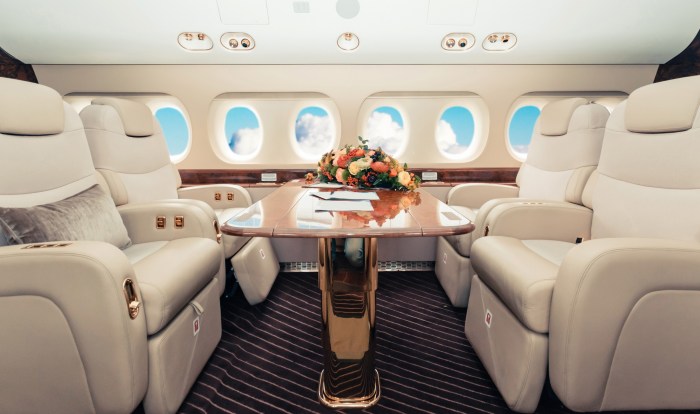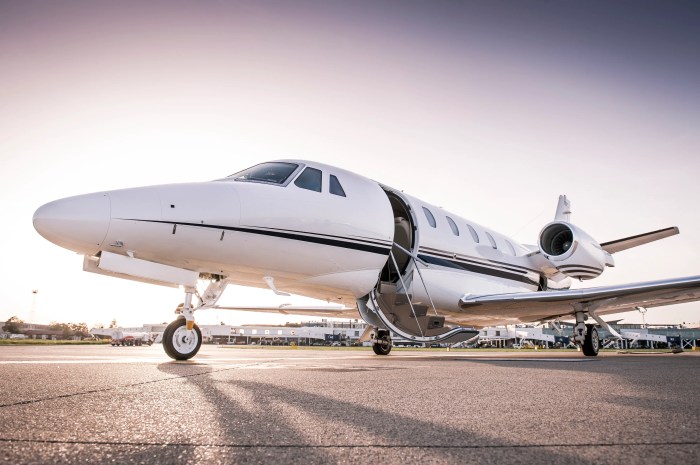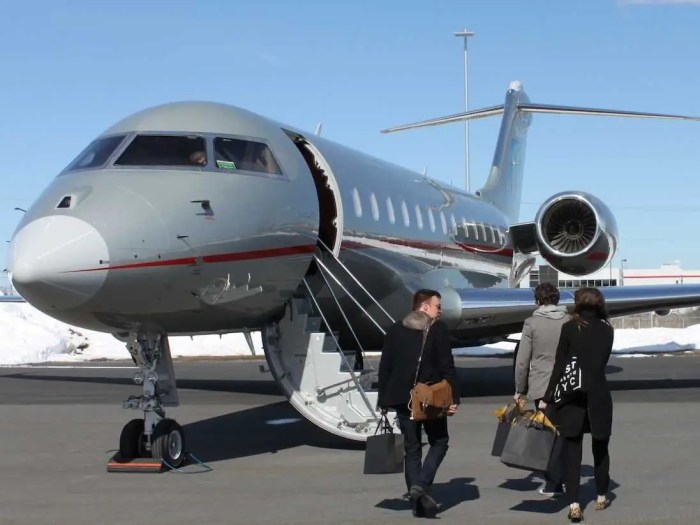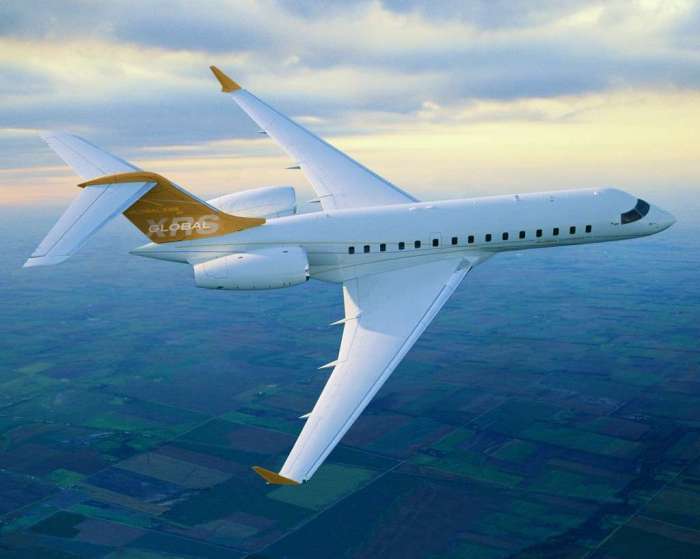Private Jet Flights: Luxury, Convenience, and Accessibility

Private jet flights offer a world of unparalleled luxury, convenience, and efficiency. These exclusive travel options cater to discerning individuals and businesses seeking a personalized and seamless travel experience. From the moment you step onto the tarmac, you’re enveloped in a world of personalized service, unparalleled comfort, and time-saving efficiency.
Private jet travel transcends the limitations of commercial flights, offering unparalleled flexibility, privacy, and control over your journey.
The allure of private jet travel stems from its ability to cater to individual needs and preferences. Whether you’re a busy executive seeking to maximize productivity, a family planning a memorable vacation, or a group of friends embarking on an adventure, private jet flights provide the ultimate in travel freedom and convenience.
The experience extends beyond the flight itself, encompassing a range of exclusive services designed to enhance your travel experience.
The Appeal of Private Jet Flights
Private jet travel has become increasingly popular, offering a distinct set of advantages over commercial flights. This appeal stems from a combination of factors, including time savings, enhanced convenience, increased privacy, and a higher level of luxury.
Time Savings, Private jet flights
The most significant benefit of private jet travel is the ability to save time. Private jets operate on a more flexible schedule, allowing for direct flights to smaller airports, bypassing the congestion and delays associated with commercial airports. This direct access eliminates the need for layovers and reduces travel time significantly.
For example, a private jet flight from New York to Los Angeles can take just over five hours, compared to a commercial flight that can take eight hours or more, including layovers.
Convenience
Private jet travel offers unparalleled convenience. Passengers can schedule flights according to their own needs, without the constraints of fixed schedules and limited seat availability. This flexibility is particularly advantageous for business travelers who need to reach their destination quickly and efficiently.
Additionally, private jet terminals are typically less crowded, offering a smoother and more personalized experience.
Privacy
Private jet travel provides a high level of privacy and exclusivity. Passengers have access to a private cabin, free from the distractions and potential security concerns of commercial flights. This level of privacy is crucial for business executives, celebrities, and other individuals who value discretion.
Luxury
Private jets are designed to offer a luxurious travel experience. Passengers can enjoy spacious cabins, comfortable seating, and personalized amenities, including gourmet meals, premium beverages, and entertainment systems. The high level of service and attention to detail ensures a comfortable and enjoyable journey.
Situations Where Private Jet Travel is Particularly Advantageous
Private jet travel is particularly advantageous in situations where time is of the essence, such as:
- Business Meetings: Executives can maximize their time by flying directly to their destination, allowing for more productive meetings and negotiations.
- Sporting Events: Teams and athletes can avoid travel delays and ensure they arrive at their destination rested and ready to compete.
- Medical Emergencies: Private jets can transport patients quickly and efficiently to specialized medical facilities, saving valuable time and potentially improving outcomes.
- Family Vacations: Families can enjoy a more relaxed and personalized travel experience, avoiding the stress and crowds associated with commercial flights.
Cost and Accessibility of Private Jet Flights

Private jet travel offers unparalleled convenience and luxury, but it comes at a premium. Understanding the cost factors and available options for accessing this mode of transportation is crucial for discerning travelers.
Cost Factors Associated with Private Jet Travel
The cost of private jet travel is influenced by several factors, making it essential to consider your specific needs and budget.
- Aircraft Type: The size and capabilities of the aircraft play a significant role in determining the cost. Smaller, light jets are more affordable than larger, long-range jets, which are equipped for transatlantic flights and can accommodate more passengers. For example, a light jet like the Embraer Phenom 300 can cost around $2,500 per hour, while a large cabin jet like the Gulfstream G650ER can cost upwards of $10,000 per hour.
- Distance: The distance traveled is directly proportional to the cost of the flight. Longer flights naturally require more fuel and flight time, increasing the overall expense. For instance, a 500-mile flight on a light jet might cost around $5,000, while a 3,000-mile flight could cost upwards of $20,000.
- Additional Services: Private jet travel offers a range of additional services that can significantly impact the cost. These include catering, ground transportation, in-flight entertainment, and concierge services. For instance, catering can range from basic snacks to gourmet meals, and ground transportation can include luxury cars or helicopters.
Options for Accessing Private Jet Travel
While private jet travel may seem exclusive, there are several options for accessing this mode of transportation, catering to various budgets and needs.
- Fractional Ownership: This option involves purchasing a share of a specific aircraft, granting you access to the jet for a predetermined number of hours per year. Fractional ownership offers a cost-effective solution for frequent flyers who need consistent access to private jets.However, it requires a significant upfront investment and ongoing maintenance costs.
- Jet Cards: Jet cards provide pre-paid flight hours on specific aircraft types, offering flexibility and convenience. They are a popular choice for travelers who require occasional private jet travel but don’t want the commitment of fractional ownership. Jet cards offer a fixed hourly rate, eliminating the uncertainty of fluctuating charter prices.
- Charter Flights: This option allows you to rent a private jet for a specific flight, offering maximum flexibility and customization. Charter flights are ideal for one-off trips or last-minute travel needs. However, the cost of charter flights can vary significantly depending on the aircraft type, distance, and time of year.
Comparing the Costs of Private Jet Travel with Commercial Flights
Private jet travel offers significant advantages over commercial flights in terms of time efficiency and convenience. However, it is essential to consider the cost implications.
- Time Efficiency: Private jet travel eliminates the need for airport security lines, baggage check-in, and layovers, allowing you to reach your destination faster. This time-saving advantage is particularly valuable for business travelers and those with tight schedules.
- Convenience: Private jet travel offers unparalleled convenience. You can fly from smaller, regional airports, avoiding crowded terminals and long lines. Additionally, you have complete control over your travel itinerary, allowing you to depart and arrive at your preferred times.
- Cost: While private jet travel offers significant benefits, it comes at a premium. The cost of a private jet flight can be significantly higher than a commercial flight, especially for shorter distances. However, for frequent flyers or those with specific needs, the time and convenience advantages may outweigh the higher cost.
Types of Private Jets

Private jets come in a variety of sizes, ranges, and passenger capacities, catering to diverse needs and budgets. From small, single-engine aircraft ideal for short hops to luxurious, long-range jets capable of intercontinental travel, the world of private aviation offers a wide selection.
Categorization of Private Jets
Private jets can be categorized based on their size, range, and passenger capacity. This categorization provides a framework for understanding the different types of aircraft available and their suitability for various purposes.
| Aircraft Type | Passenger Capacity | Range | Typical Uses |
|---|---|---|---|
| Very Light Jets (VLJs) | 4-6 passengers | 1,000-1,500 nautical miles | Short-haul flights, business travel, personal transportation |
| Light Jets (LJs) | 6-8 passengers | 1,500-2,500 nautical miles | Regional travel, corporate flights, family vacations |
| Mid-Size Jets (MSJs) | 8-10 passengers | 2,500-4,000 nautical miles | Transcontinental flights, international travel, group charters |
| Super Mid-Size Jets (SMSJs) | 10-12 passengers | 4,000-5,000 nautical miles | Long-haul flights, transatlantic travel, luxury travel |
| Heavy Jets (HJs) | 12-16 passengers | 5,000-6,000 nautical miles | Intercontinental flights, high-capacity travel, corporate jets |
| Ultra-Long Range Jets (ULRs) | 12-19 passengers | 6,000+ nautical miles | Global travel, VIP transportation, private charters |
Private Jet Operators and Services

Private jet operators are essential to the private aviation industry, providing a comprehensive range of services that cater to the needs of discerning travelers seeking a personalized and luxurious flight experience. They act as intermediaries between aircraft owners and those seeking private jet travel, offering a seamless and efficient service that covers all aspects of the journey.
Prominent Private Jet Operators
Private jet operators vary in size, fleet composition, and service offerings, each catering to a specific niche within the private aviation market. Some of the most prominent operators include:
- NetJets: One of the largest private jet operators globally, NetJets offers fractional ownership, jet cards, and on-demand charter services. They boast a diverse fleet of aircraft, including Cessna Citation, Embraer Legacy, and Bombardier Challenger models, catering to a wide range of travel needs.NetJets is known for its extensive global network, comprehensive safety protocols, and dedicated customer service.
- Flexjet: Flexjet specializes in fractional ownership and jet card programs, providing access to a fleet of luxurious aircraft, including Bombardier Challenger, Embraer Legacy, and Gulfstream models. They offer a high level of personalized service, including dedicated flight crews and a dedicated concierge team to handle travel arrangements.Flexjet’s focus on safety and operational efficiency has earned them a strong reputation in the industry.
- XO: XO is a rapidly growing private aviation company that offers on-demand charter services, jet cards, and membership programs. They operate a diverse fleet of aircraft, including Embraer Phenom, Cessna Citation, and Gulfstream models. XO is known for its innovative technology platform that allows users to book flights, manage their travel itinerary, and access real-time flight status updates.They also offer a range of concierge services, including ground transportation, catering, and travel assistance.
- FlyPrivate: FlyPrivate is a leading provider of private jet charter services, offering access to a wide range of aircraft, including light jets, mid-size jets, and heavy jets. They are known for their competitive pricing, transparent pricing structure, and 24/7 customer support.FlyPrivate specializes in providing personalized flight solutions for both business and leisure travelers.
Services Offered by Private Jet Operators
Private jet operators go beyond simply providing aircraft. They offer a comprehensive suite of services designed to enhance the travel experience and provide peace of mind to their clients. These services typically include:
- FlightPlannin: Private jet operators work closely with clients to create detailed flight plans, considering factors such as departure and arrival airports, flight times, and passenger preferences. They handle all aspects of flight planning, including obtaining necessary permits and approvals, coordinating with air traffic control, and ensuring a smooth and efficient journey.
- Catering: Private jet operators offer a wide range of catering options to meet the specific dietary needs and preferences of their clients. From gourmet meals prepared by renowned chefs to simple snacks and beverages, they ensure a personalized and enjoyable dining experience onboard.
- Ground Transportation: Private jet operators provide seamless ground transportation services, connecting clients to their destinations with luxury vehicles. They arrange for airport transfers, limousine services, and other transportation options to ensure a smooth and comfortable travel experience.
- Concierge Services: Many private jet operators offer concierge services to handle all aspects of travel planning, from booking accommodations and securing tickets to events to arranging for local guides and experiences. They act as a single point of contact, providing personalized support and ensuring a stress-free journey.
Comparison of Private Jet Operator Services
| Operator | Fleet Size | Specializations | Services |
|---|---|---|---|
| NetJets | 700+ | Fractional ownership, jet cards, on-demand charter | Flight planning, catering, ground transportation, concierge services, dedicated flight crews, global network |
| Flexjet | 200+ | Fractional ownership, jet cards | Flight planning, catering, ground transportation, concierge services, dedicated flight crews, personalized service |
| XO | 100+ | On-demand charter, jet cards, membership programs | Flight planning, catering, ground transportation, concierge services, innovative technology platform, real-time flight status updates |
| FlyPrivate | N/A | On-demand charter | Flight planning, catering, ground transportation, competitive pricing, transparent pricing structure, 24/7 customer support |
Safety and Security of Private Jet Flights

Private jet travel is often associated with luxury and convenience, but it’s also essential to consider the safety and security aspects. The industry boasts stringent regulations and advanced security measures to ensure a safe and secure experience for passengers.
Safety Regulations and Standards
Safety in private jet operations is paramount, governed by a comprehensive set of regulations and standards. These regulations cover various aspects, including aircraft maintenance, pilot qualifications, and operational procedures. The Federal Aviation Administration (FAA) in the United States sets the primary safety standards for private jet operations.
The FAA mandates rigorous aircraft inspections, pilot training, and ongoing safety audits. Private jet operators are required to adhere to these standards, ensuring that aircraft are maintained to the highest safety standards and pilots are highly skilled and experienced. In addition to FAA regulations, private jet operators often follow industry best practices and standards set by organizations like the National Business Aviation Association (NBAA).
These organizations guide safety management systems, operational procedures, and risk mitigation strategies.
Security Measures for Private Jet Travel
Private jet travel incorporates multiple layers of security measures to safeguard passengers and aircraft. These measures are designed to prevent unauthorized access, detect potential threats, and ensure a secure journey.
Passenger Screening
Passenger screening is a crucial aspect of private jet security. While procedures may vary depending on the operator and destination, common practices include:
- Identity Verification: Passengers are typically required to present valid identification documents for verification purposes.
- Background Check: Some operators may conduct background checks on passengers, especially for high-profile individuals or flights to sensitive locations.
- Security Questionnaires: Passengers may be asked to complete security questionnaires to identify potential risks or threats.
- Baggage Screening: Hand luggage and checked baggage are often screened using advanced technology similar to those employed at commercial airports.
Aircraft Security Protocols
Private jets are subject to rigorous security protocols to ensure their safety and prevent unauthorized access. These protocols include:
- Access Control: Access to the aircraft is strictly controlled, with authorized personnel required to present valid identification and undergo security checks.
- Security Personnel: Private jet operators often employ security personnel to monitor aircraft and airport facilities, ensuring a safe and secure environment.
- Pre-Flight Inspections: Before each flight, aircraft undergo thorough pre-flight inspections to identify any potential security threats or mechanical issues.
- Flight Tracking: Private jet flights are often tracked in real-time, allowing operators and authorities to monitor their location and status.
Comparison with Commercial Flights
While both private and commercial flights adhere to strict safety regulations, there are some key differences in their security measures:
- Passenger Screening: Private jet passenger screening is often more personalized and less intrusive than commercial airport screenings.
- Aircraft Security: Private jets typically have fewer passengers and crew members, making security checks and access control more manageable.
- Flight Paths: Private jets often have more flexibility in choosing flight paths, which can help avoid crowded airspace and potentially reduce the risk of security threats.
- Airport Access: Private jets often use smaller, less crowded airports, which can reduce the risk of security breaches.
Environmental Impact of Private Jet Flights
Private jet travel, while offering unparalleled convenience and luxury, comes with a significant environmental footprint. The industry’s reliance on fossil fuels for propulsion contributes to greenhouse gas emissions, contributing to climate change. This section examines the environmental impact of private jet flights, explores initiatives to mitigate their impact, and compares their environmental footprint to commercial flights.
Fuel Consumption and Emissions
Private jets are known for their high fuel consumption and emissions. The size and weight of private jets, coupled with their shorter flight distances, often result in less efficient fuel use compared to commercial airlines. This is because private jets typically fly at lower altitudes and speeds, leading to increased fuel burn per passenger.
- Fuel Consumption: Private jets burn significantly more fuel per passenger than commercial aircraft. For instance, a typical private jet carrying eight passengers might consume around 1,000 gallons of jet fuel for a 500-mile flight. In contrast, a commercial airliner carrying 200 passengers on the same route would consume approximately 10,000 gallons of fuel.
- Emissions: Private jets emit a disproportionate amount of greenhouse gases, including carbon dioxide (CO2), nitrogen oxides (NOx), and soot particles. These emissions contribute to climate change, air pollution, and respiratory problems.
Initiatives and Technologies for Reducing Environmental Impact
The private jet industry is increasingly aware of its environmental impact and is exploring various initiatives and technologies to reduce emissions:
- Sustainable Aviation Fuels (SAFs): SAFs are produced from renewable sources, such as used cooking oil and agricultural waste, and can significantly reduce greenhouse gas emissions compared to traditional jet fuel.
- Carbon Offsetting: Private jet operators can purchase carbon offsets to compensate for the emissions generated by their flights. These offsets support projects that reduce greenhouse gas emissions in other sectors, such as renewable energy development.
- Fuel-Efficient Aircraft Designs: Manufacturers are developing more fuel-efficient private jets with improved aerodynamics, lighter materials, and advanced engine technology.
Comparison with Commercial Flights
While private jets consume more fuel per passenger than commercial airlines, the overall environmental impact of private jet travel can vary depending on the number of passengers and the distance traveled.
- Short-Distance Flights: For short-distance flights, the environmental impact of private jets can be significantly higher than commercial flights, as the fuel consumption per passenger is greater.
- Long-Distance Flight: On long-distance flights, the environmental impact of private jets can be comparable to commercial flights, particularly if the private jet is carrying a full load of passengers.
The Future of Private Jet Flights
The aviation industry is constantly evolving, with advancements in technology and changing consumer preferences shaping the future of air travel. Private jet flights are no exception, and the industry is poised for significant growth and transformation.
Emerging Trends and Advancements in Private Jet Technology
Technological advancements are driving innovation in the private jet sector, paving the way for a more sustainable, efficient, and luxurious travel experience.
- Electric and Hybrid Aircraft: The development of electric and hybrid aircraft is gaining momentum, offering a promising solution for reducing emissions and noise pollution. Companies like Eviation and Heart Aerospace are leading the charge in developing electric aircraft specifically for regional and short-haul flights.These aircraft are expected to be quieter, more efficient, and have a significantly lower carbon footprint compared to traditional jet engines.
- Autonomous Flight: Autonomous flight technology is being explored in the aviation industry, with potential applications for private jet flights. While fully autonomous private jets are still in the early stages of development, advancements in artificial intelligence (AI) and automation are paving the way for increased automation in the cockpit, leading to enhanced safety and efficiency.
- Advanced Materials: Advancements in materials science are leading to the development of lighter and stronger materials for aircraft construction. This allows for improved fuel efficiency, reduced emissions, and enhanced performance. Carbon fiber composites, for instance, are increasingly being used in private jet construction, offering a significant weight reduction compared to traditional aluminum alloys.
- Connectivity and In-Flight Entertainment: The demand for connectivity and in-flight entertainment is growing among private jet passengers. Advanced Wi-Fi systems and entertainment options are being incorporated into private jets, providing passengers with a seamless and comfortable travel experience.
Impact of Advancements on Private Jet Travel
These advancements are expected to have a significant impact on the future of private jet travel.
- Increased Accessibility: The development of electric and hybrid aircraft is expected to make private jet travel more affordable and accessible to a wider range of travelers. With lower operating costs and reduced maintenance requirements, these aircraft could make private jet travel a more viable option for individuals and businesses with moderate budgets.
- Enhanced Sustainability: Electric and hybrid aircraft are significantly more environmentally friendly than traditional jet engines, reducing carbon emissions and noise pollution. This aligns with the growing focus on sustainability in the aviation industry, making private jet travel a more responsible choice.
- Improved Efficiency: Advancements in materials and technology are leading to improved fuel efficiency and reduced operating costs for private jets. This could make private jet travel more cost-effective and competitive with commercial airlines for certain routes and destinations.
- Enhanced Safety and Security: The integration of autonomous flight technology and advanced safety features is expected to enhance safety and security in private jet travel. This could lead to a reduction in accidents and incidents, providing passengers with greater peace of mind.
Future Role of Private Jet Flights in the Aviation Industry
Private jet flights are expected to play an increasingly important role in the aviation industry, catering to a growing demand for personalized and efficient travel experiences.
- Luxury and Exclusivity: Private jets will continue to offer a premium travel experience, providing passengers with privacy, flexibility, and convenience. The focus on luxury and exclusivity will continue to drive demand for private jet travel among high-net-worth individuals and businesses.
- Business Travel: Private jets are increasingly being used for business travel, allowing executives and entrepreneurs to travel efficiently and effectively. The ability to fly directly to their destination, avoid airport congestion, and manage their time effectively makes private jet travel a valuable tool for business professionals.
- Medical Tourism: Private jets are playing an increasingly important role in medical tourism, allowing patients to travel safely and comfortably to specialized medical facilities around the world. The ability to transport patients quickly and efficiently is particularly valuable for time-sensitive medical situations.
- Sustainable Travel: The development of electric and hybrid aircraft is positioning private jet travel as a more sustainable option for certain routes and destinations. As the focus on sustainability grows, private jet operators are increasingly adopting environmentally friendly practices and technologies.
Last Word

In the realm of private jet flights, the possibilities are limitless. From the thrill of exploring exotic destinations to the efficiency of conducting business across continents, private jet travel offers a unique blend of luxury, convenience, and accessibility. As technology continues to evolve, the future of private jet travel promises even greater efficiency, sustainability, and personalized experiences.
Whether you’re a seasoned traveler or considering a first-time private jet experience, the world of private aviation awaits, ready to elevate your travel journey to new heights.
Comments are closed.